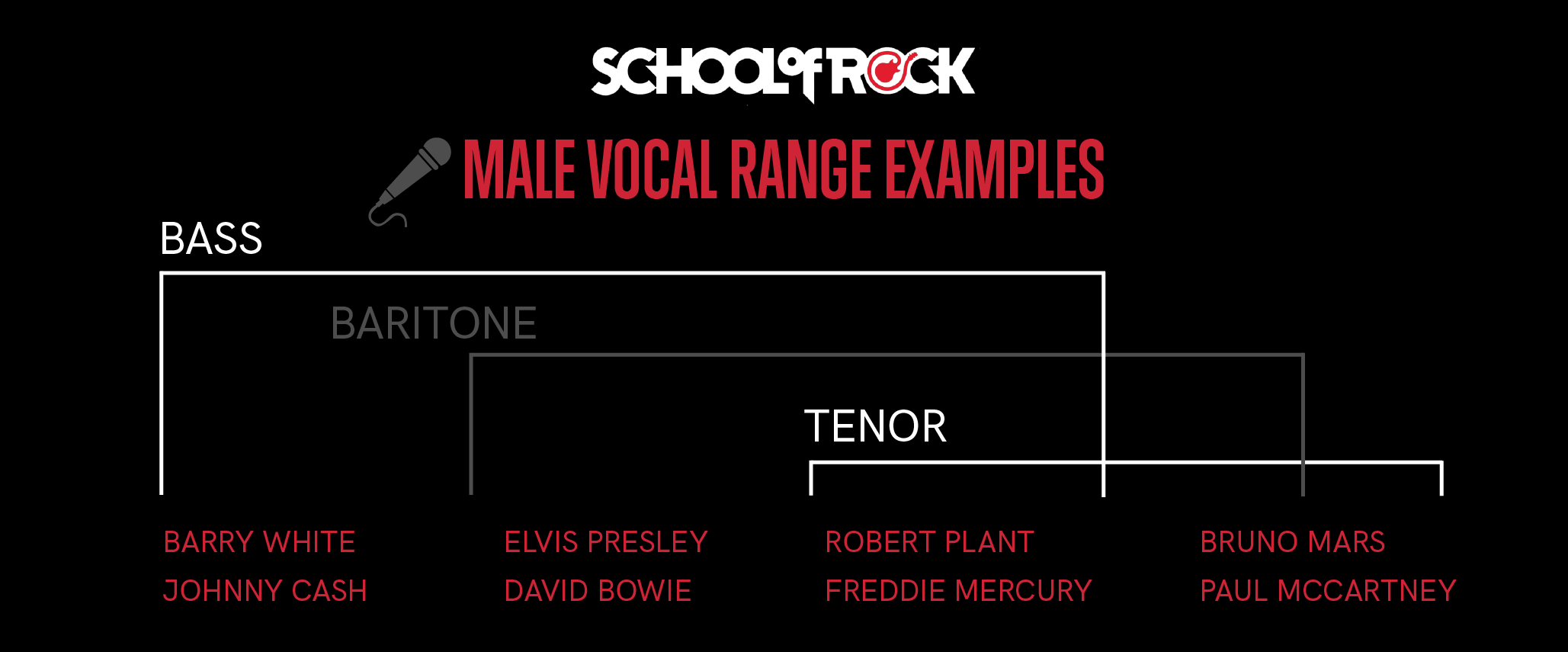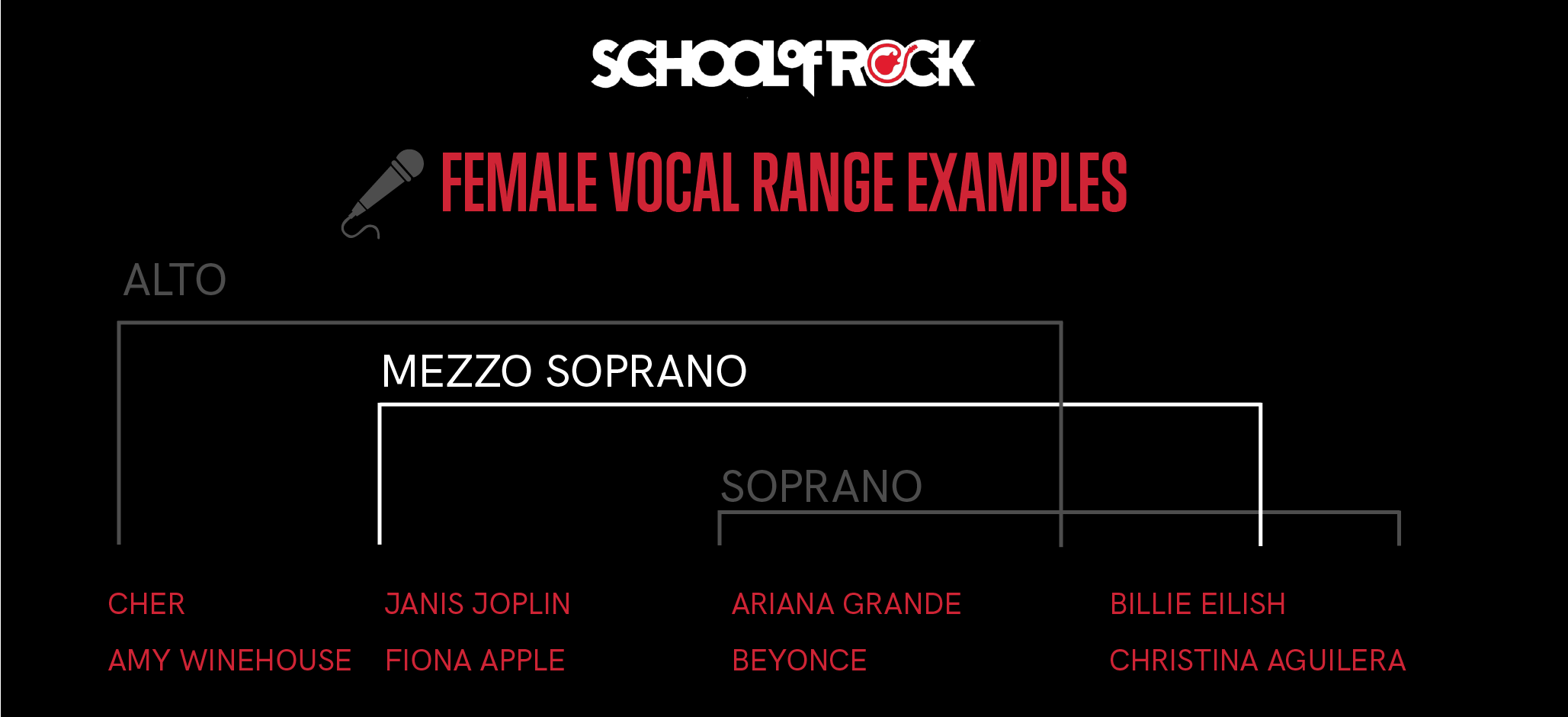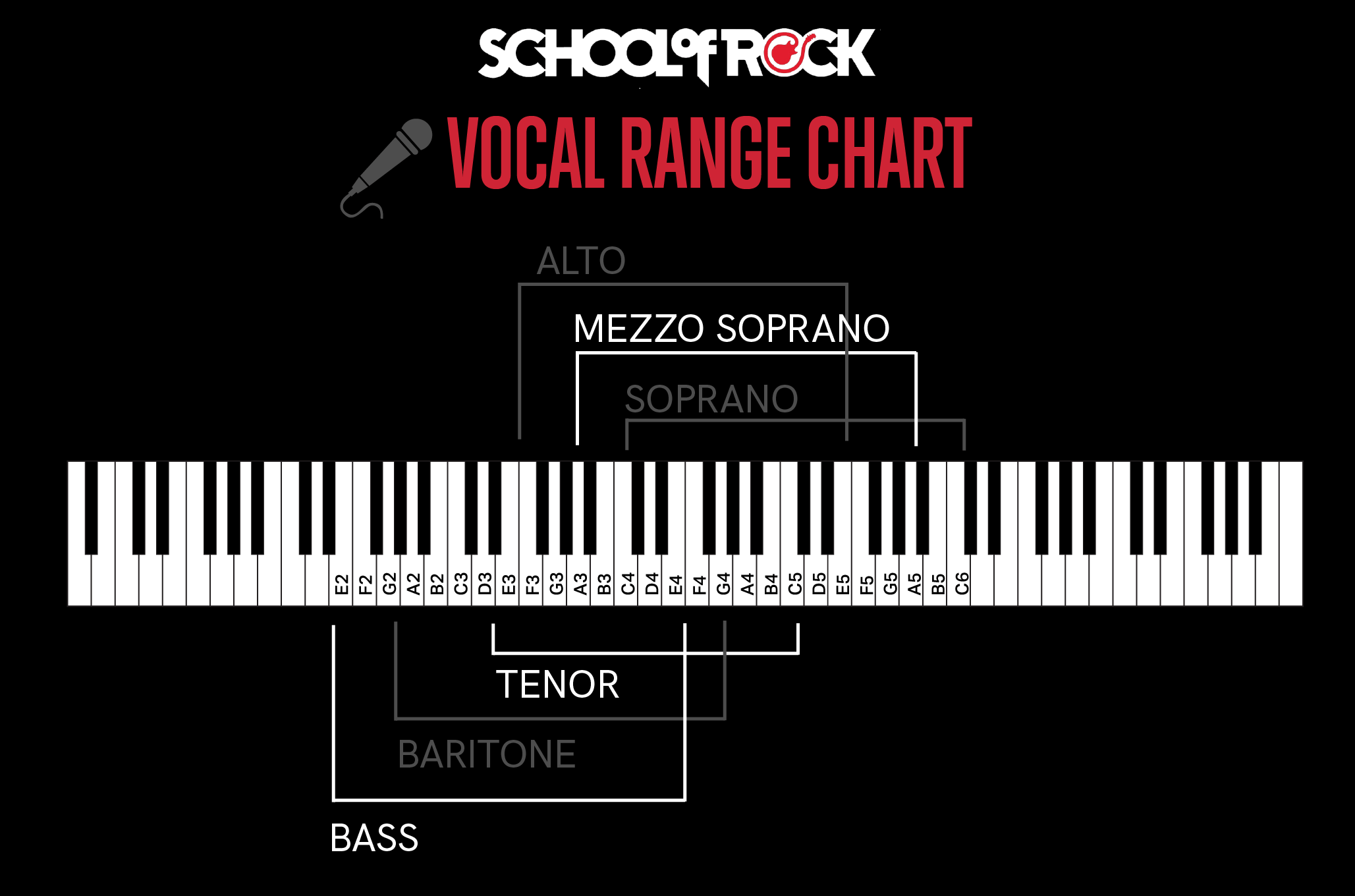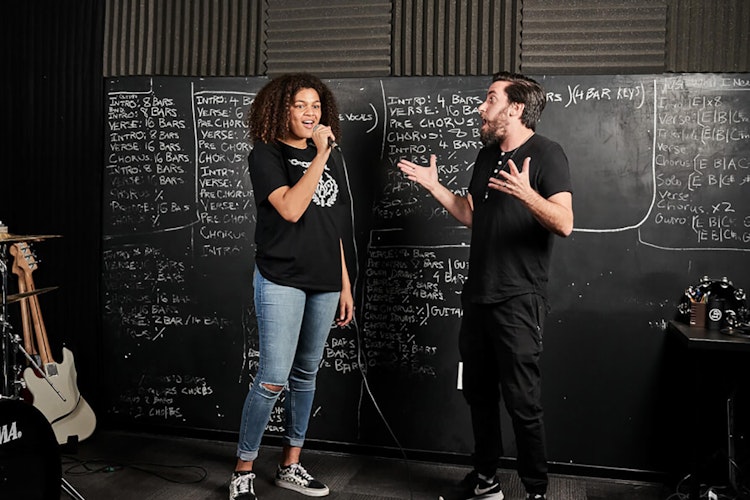Freddie Mercury, Whitney Houston, Axl Rose, Mariah Carey, and Prince. Five iconic singers known for their incredible vocal ranges. These artists’ vocal lines stretch from the depths to the heights of what a human body’s instrument can do. But what is a vocal range, and how does knowing your vocal range help you perform better?
What is Vocal Range?
Your voice is unique because it comes from your anatomy. Vocal cords are folds in the throat tissue that vibrate together to create sound. The vocal chords themselves, along with the shape and size of your resonance chambers, determine the qualities of your sound and the expanse of your range. Vocal range is the number of octaves your voice can reach.
What is the average male vocal range?
About 1.5 to 2 octaves, while for others it can reach four (Freddie Mercury) or even six (Axl Rose and Mike Patton).
What is the average female vocal range?
About 2 to 3 octaves, but for some artists it can reach further, such as Mariah Carey who has a 5-octave vocal range.
Vocal ranges are categorized into six main groups. The way these groups are defined comes in handy when singing traditional, arranged music. In modern rock and pop music, the process on how to find your vocal range is a little different with more exceptions to the rules, but knowing your vocal range can help you find songs that fit best for your voice. Being categorized into one of these groups doesn’t mean you can’t sing other notes, it just tells you where your voice is naturally the strongest.
From the bottom to the top, these vocal range groups are: bass, baritone, tenor, alto, mezzo-soprano, and soprano.

What is a Bass’s Vocal Range?
The bass range is the lowest, covering C2 - E4 on the piano.
Famous Singers with Bass Vocal Ranges:
- Johnny Cash, D#2 - B5
- Barry White, C3 - A4
What is a Baritone’s Vocal Range?
Baritone vocal ranges, F2 - G4, are mid-range for male voices.
Famous Singers with Baritone Vocal Ranges:
- Elvis Presley, F#1 - A5
- Corey Taylor, F1 - G5
- David Bowie, B1 - Eb6
- Chris Cornell, C2 - A5
What is a Tenor’s Vocal Range?
Tenors sing the high notes, B2 - C5, and above that, lives the countertenor. Countertenors are men with very well-developed falsettos that can sing above the C5.
Famous Singers with Tenor Vocal Ranges:
- Freddie Mercury, F2 - F5
- Robert Plant, G2 - C#6
- Brendon Urie, D2 - C7
- Paul McCartney, A1 - E6
- Bruno Mars, C3 - D5 - C6
- Prince, F2 - C7
- Charlie Puth, C#2 - G5
While these first three vocal types are associated with the male voice, the next three are used to classify the female voice.

What is an Alto’s Vocal Range?
Hail the alto, the lowest of the female vocal ranges, C#3 - E5.
Famous Singers with Alto Vocal Ranges:
- Amy Winehouse, D3 - Eb6
- Cher, C3 - E5 - F6
- Fiona Apple, D3 - E5
- Tina Turner, D#3 - F#5
- Lana Del Rey, Bb2 - F5 - C#6
What is a Mezzo-Soprano’s Vocal Range?
The mid-range of the female vocal spectrum. This range sits on the piano from F3 - G#5.
Famous Singers with Mezzo-Soprano Vocal Ranges:
- Janis Joplin, D3 - A5
- Beyoncé, C3 - F6
- Alanis Morisette, D#3 - G7
- Lady Gaga, A2 – G5 – B5
What is a Soprano’s Vocal Range?
The modern pop soprano typically has a soprano vocal range of B3 - C6.
Famous Singers with Soprano Vocal Ranges:
- Ariana Grande, D3 - B5 - E7
- Billie Eilish, D3 - B4 - G5
- Christina Aguilera, C3 - C7
- Aaliyah, G2 - E6
- Floor Jansen, C3 - F6
- Whitney Houston, A2 - G#5 - C#6 (A6)
How to Find Your Vocal Range
Remember, these classifications are based on traditionally arranged music, not pop/rock music, where most lead singers can and will defy the “rules.” So, how do you figure out your vocal range? There are a few different ways. Our School of Rock Method App has some exercises you can easily follow along with that will help you get started:
- Open the App and click the menu on the top right, then select Content > All. This will bring up the content available to you.
- Select the Voice Method Book 1.
- Start with Module 1 (Total Breath Exercise) to warm up your breath to relax the voice for vocalizing.
- Move to Module 2’s “Lip Trills and Sirens” to start getting your voice warmed up. You never want to sing with cold vocal cords!
- Search for the “Noo Nee Noo Downwards” exercise to find the bottom of your range. Notate the lowest note you can easily sing.
- Then to find your upper range, you can search the “Finding Your Range” exercise and follow along with that. Notate the highest note you can easily sing.

If you’d like to take the more organic approach, try the good ol’ piano. Follow these steps to check your vocal range:
- Start with a gentle, relaxed hum, wherever that naturally sits in your voice. Find that corresponding note on the piano. This will help you identify where your speaking voice sits; this is helpful because our singing voice is an expansion of our speaking voice.
- Take a nice deep singers-breath in (relaxing the abdomen and using your breath to sustain the hum), and start by doing gentle “sirens” up. A siren can best be described as mimicking the siren of a firetruck or ambulance. Try not to force anything. We’re not testing your vocal range yet! Just getting the vocal cords warmed up easily and gently. Do this three to five times.
- Now, starting at that same note you found in your first hum, follow the notes downwards on “Zah Zah Zah,” five notes at a time, then take that starting note a half-step down for five more, until you hit notes that start to strain your voice. Note: singing should NEVER hurt your voice, but sometimes as we test the vocal range it may be that a note is difficult or just simply not there. This process will show you the lowest notes you can hit well. Record this as your lowest note.
- Finally, do the same thing going up, starting at that same baseline note. This time though, start with “Zee Zee Zee” and go up and back down the five notes. Keep moving a half step up after each run. When “Zee” gets too difficult (usually around B4 or C5) switch to “Zah Zah Zah.” When you can’t sing a note well, mark that down as your highest note.
Whether you are using the app or a piano, make sure you keep this whole process easy and simple. We’re not trying to “belt” our way through this; we are just simply seeing what notes are easy and at what point things start to get difficult. Don’t be surprised if you find a “break” in your vocal range somewhere. This means it’s easy to sing the notes before and after that particular note, but that note (or several) feels like it’s moving out of one part of your voice and into another, causing a “break” in the voice.
Take a look at your recorded lowest note, as well as the highest note. Compare both to the ranges listed above on the Vocal Range Chart to see where you sit. Don’t be surprised if you don’t exactly match one, they’re simply used as a frame of reference.
If this sounds confusing, do this exercise with a trained professional, like a School of Rock music teacher, who can guide you through the process. Even if you can hit a note on the low or high end of your vocal abilities, it might not be included in your vocal range because it’s not a quality sound.
Now, should you include your “head voice” or “falsetto” in your vocal range? There is little distinction between these two terms, other than they are gendered. “Head voice” is used to distinguish the upper part of the female register, and “falsetto,” for male registers. Ultimately, what you include in your vocal range is what you can sing easily, resonantly, and clearly. Keep in mind that different bodies will have different access to high and low notes.
A quality sound includes resonance, clarity, and a certain amount of ease for the singer to produce. Over time and with training, “outlier” notes can be cultivated, but for now, it’s important to define your vocal range by what is naturally strong and clear. Just because you can sing a note doesn’t mean you should all the time in the beginning, but as you develop your vocal technique you may be surprised at how your vocal range naturally stretches to strengthen those notes that may be initially too low or too high. That’s why it’s important to test your range every few months and get feedback from your teacher or another outside ear to track your progress.
Knowing your vocal range is a great tool for helping you find artists that sing in a similar range to you, so you can start picking songs quickly, easily, and that fit your voice well.
Interested in learning more about singing techniques or increasing your own vocal range? School of Rock offers singing lessons for all skill levels that help teach students all aspects of vocals, from proper warm-ups and basic voice training to best vocal practices and sustainability. Find a School of Rock location near you to sign up for a trial lesson.
About the Author:
Kelsey Mathes is a consultant for School of Rock Evanston, with a focus in vocals, piano and ukulele.



